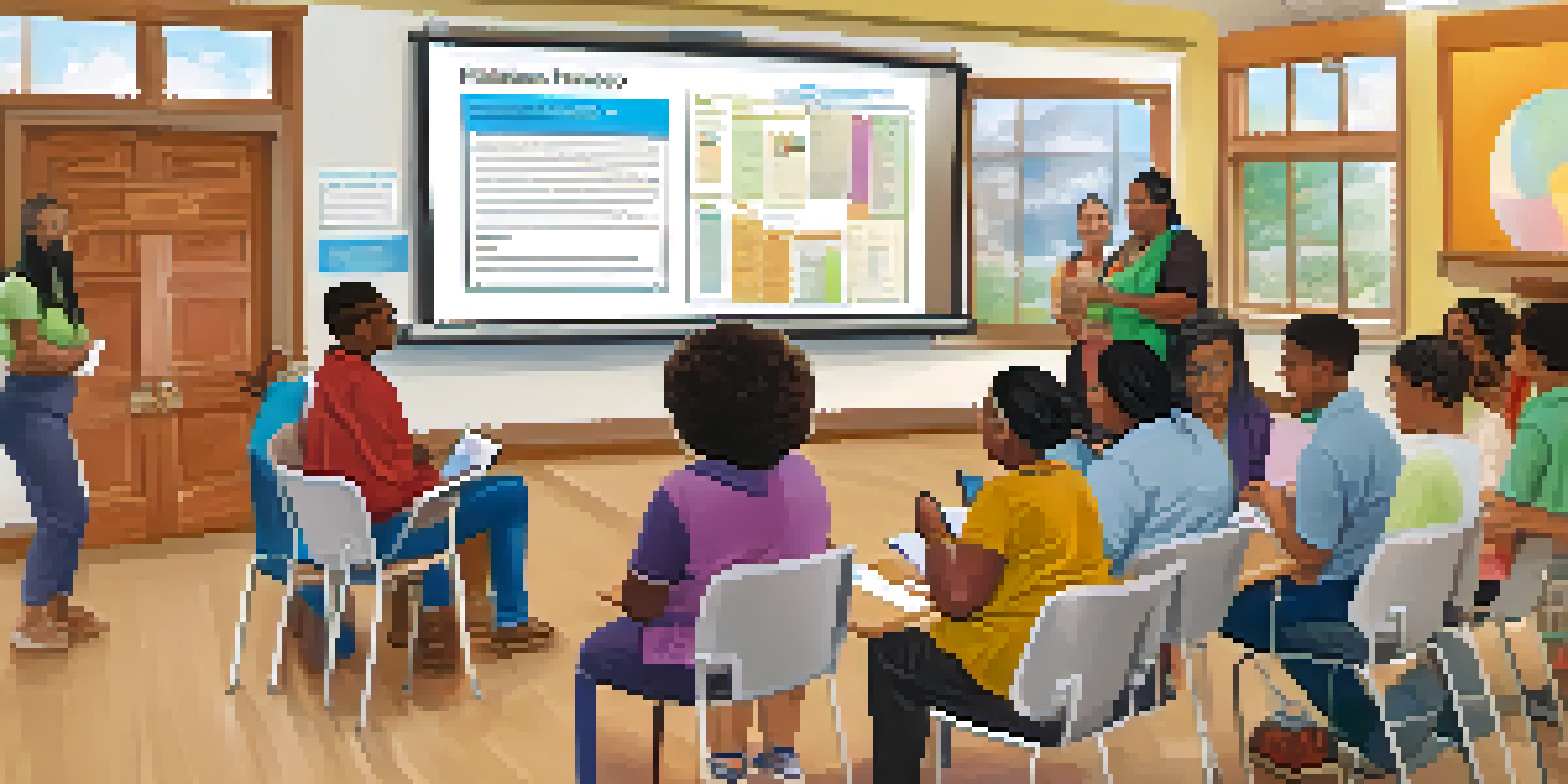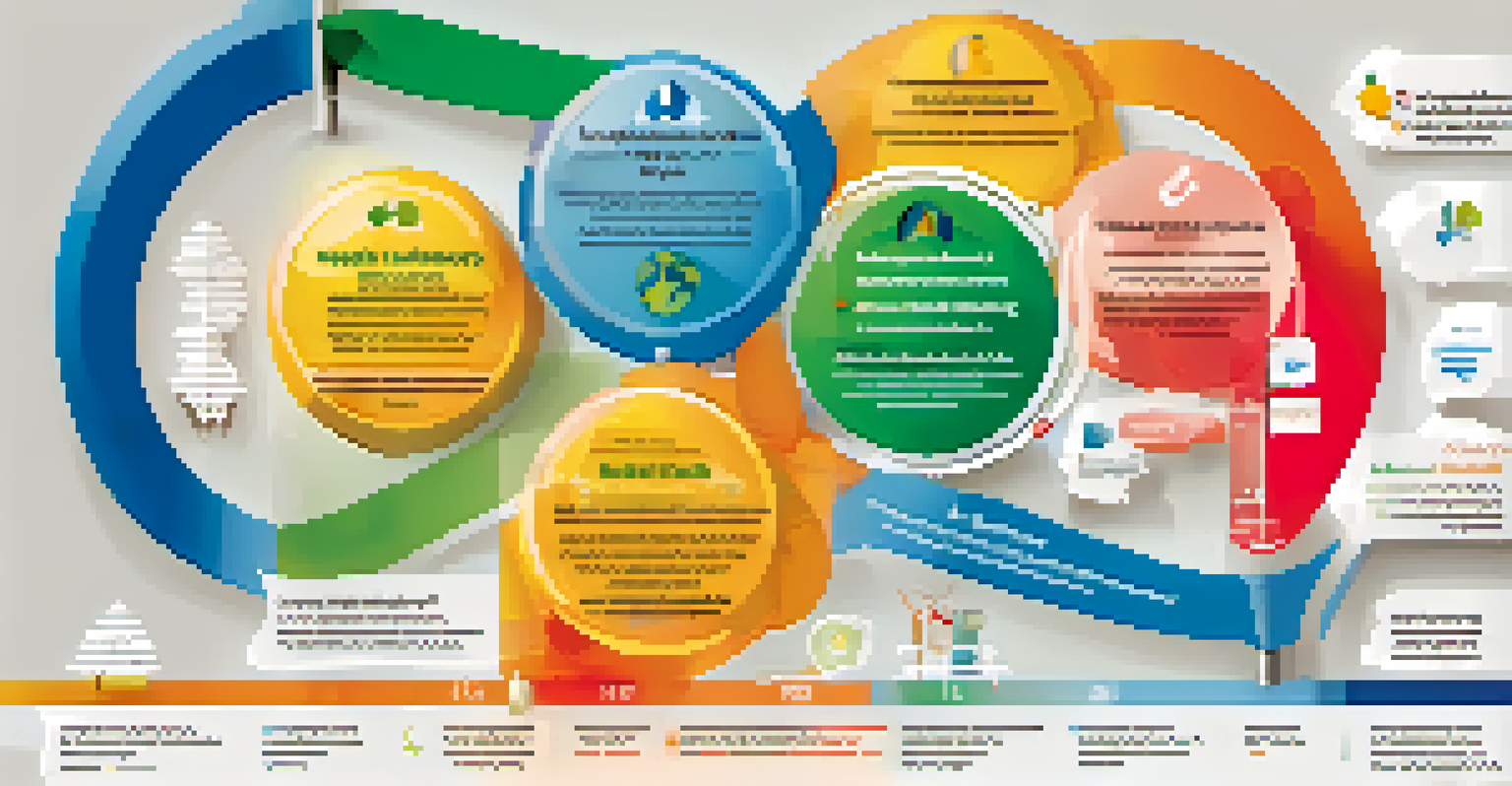Health Literacy: A Critical Factor in Achieving Equity

Understanding Health Literacy and Its Importance
Health literacy refers to the ability to obtain, process, and understand basic health information. It is crucial for making informed decisions about one's health and navigating the healthcare system effectively. When individuals possess high health literacy, they are better equipped to manage their health and engage in preventive care.
Health literacy is a crucial factor that can either bridge or widen these gaps.
Conversely, low health literacy can lead to misunderstandings about medical instructions and health conditions. This can result in poor health outcomes, as individuals may struggle to follow treatment plans or seek timely medical help. Essentially, health literacy acts as a bridge, allowing individuals to access and utilize health information confidently.
By improving health literacy, we can empower people to take control of their health. This empowerment is not just about individual well-being; it also plays a significant role in public health, as informed individuals contribute to healthier communities overall.
The Link Between Health Literacy and Health Equity
Health equity means that everyone has a fair and just opportunity to be as healthy as possible. However, disparities exist, often influenced by social determinants such as education, income, and access to resources. Health literacy is a crucial factor that can either bridge or widen these gaps.

For instance, individuals with lower health literacy may find it challenging to navigate healthcare systems, leading to missed appointments or inappropriate care. This can disproportionately affect marginalized communities, where resources and support may already be limited. Thus, enhancing health literacy can be a transformative step towards achieving equity in health outcomes.
Health Literacy Empowers Individuals
High health literacy enables individuals to make informed health decisions and effectively navigate the healthcare system.
Moreover, when communities prioritize health literacy initiatives, they foster an environment where everyone can thrive. This collective effort helps to dismantle systemic barriers and create a more inclusive healthcare landscape.
Barriers to Health Literacy in Vulnerable Populations
Several barriers hinder health literacy, particularly in vulnerable populations. Language differences, cultural beliefs, and limited access to education can significantly impact an individual's ability to understand health information. For instance, a person who speaks a different language may struggle to comprehend medical documents or instructions, leading to confusion.
The greatest disease of mankind is not tuberculosis or leprosy; it is the lack of knowledge.
Additionally, socioeconomic factors can limit access to resources that promote health literacy, such as educational programs or reliable internet access. In these scenarios, individuals may feel overwhelmed or helpless when trying to navigate their health needs. Addressing these barriers is essential for fostering health literacy across diverse communities.
Recognizing and understanding these challenges can inform strategies aimed at improving health literacy. By tailoring interventions to meet the specific needs of different populations, we can create more equitable health outcomes.
Strategies to Improve Health Literacy
Improving health literacy requires a multifaceted approach that involves healthcare providers, educators, and communities. One effective strategy is simplifying health information, using clear language and visuals to convey complex ideas. For instance, using infographics to explain medication instructions can make a significant difference in understanding.
Moreover, training healthcare professionals to communicate effectively with patients is crucial. By fostering a culture of open dialogue and patience, providers can help patients feel more comfortable asking questions and expressing concerns about their health. This, in turn, enhances patient engagement and compliance.
Bridging Health Equity Gaps
Improving health literacy can help address disparities in health outcomes, particularly in marginalized communities.
Community-based programs can also play a vital role in improving health literacy. Workshops, support groups, and outreach initiatives can empower individuals by providing them with the tools they need to navigate their health successfully.
The Role of Technology in Enhancing Health Literacy
In today's digital age, technology can be a powerful ally in promoting health literacy. Online resources, apps, and telehealth services can provide accessible information and support for individuals seeking to improve their health knowledge. For example, a user-friendly health app can offer personalized information tailored to an individual's needs.
However, it's essential to ensure that these technological solutions are inclusive and cater to diverse populations. Digital literacy, or the ability to use technology effectively, is another layer that must be addressed. Providing training on how to access and utilize these resources can help bridge the gap for those less familiar with technology.
By harnessing technology thoughtfully, we can create innovative platforms that enhance understanding and engagement in health, ultimately contributing to improved health outcomes for everyone.
Engaging Communities in Health Literacy Initiatives
Community engagement is key to fostering health literacy and achieving health equity. Involving local leaders and organizations can help tailor initiatives to the specific needs of the community. For example, hosting health fairs or workshops in familiar settings can encourage participation and foster trust.
Building partnerships with schools, libraries, and community centers can also expand outreach efforts. These venues can serve as accessible points for disseminating health information and resources. By meeting individuals where they are, we can create a more supportive environment for learning.
Community Engagement is Essential
Engaging communities in health literacy initiatives fosters trust and creates tailored solutions that meet local needs.
Additionally, encouraging community feedback can help refine programs and ensure they are effective. Listening to the voices of community members can lead to more relevant and impactful health literacy initiatives.
The Future of Health Literacy and Equity
As we look to the future, it's clear that health literacy will continue to play a pivotal role in achieving health equity. Ongoing efforts to improve health literacy must adapt to changing societal needs, technological advancements, and emerging health challenges. For instance, the COVID-19 pandemic highlighted the urgent need for clear communication and accessible health information.
Investments in health literacy education and resources can yield significant returns in public health. By prioritizing health literacy, we can reduce health disparities and promote a healthier population overall. It’s a proactive approach that benefits individuals and communities alike.

Ultimately, fostering a culture of health literacy requires collaboration among healthcare systems, policymakers, educators, and communities. Together, we can pave the way for a healthier future where everyone has the knowledge and resources to thrive.